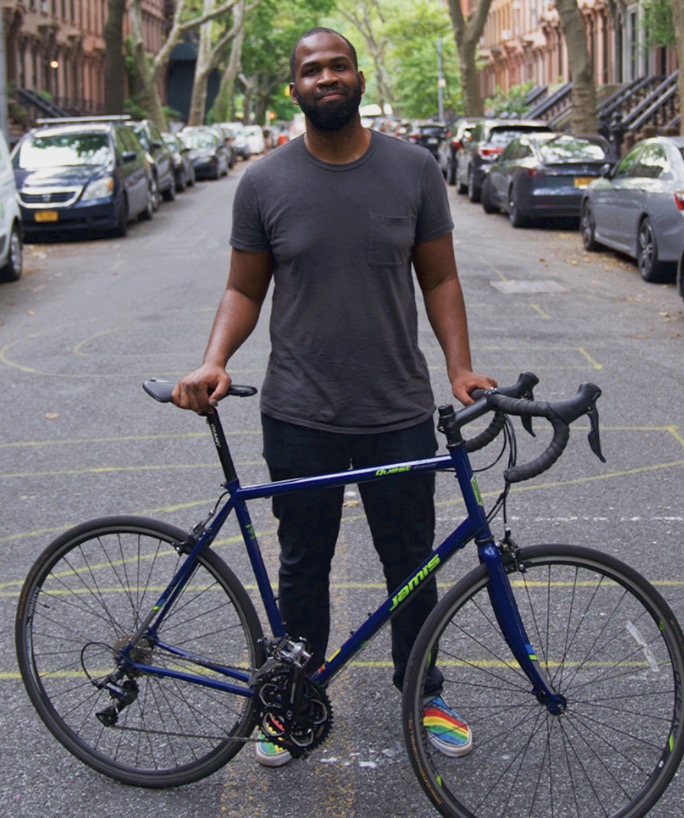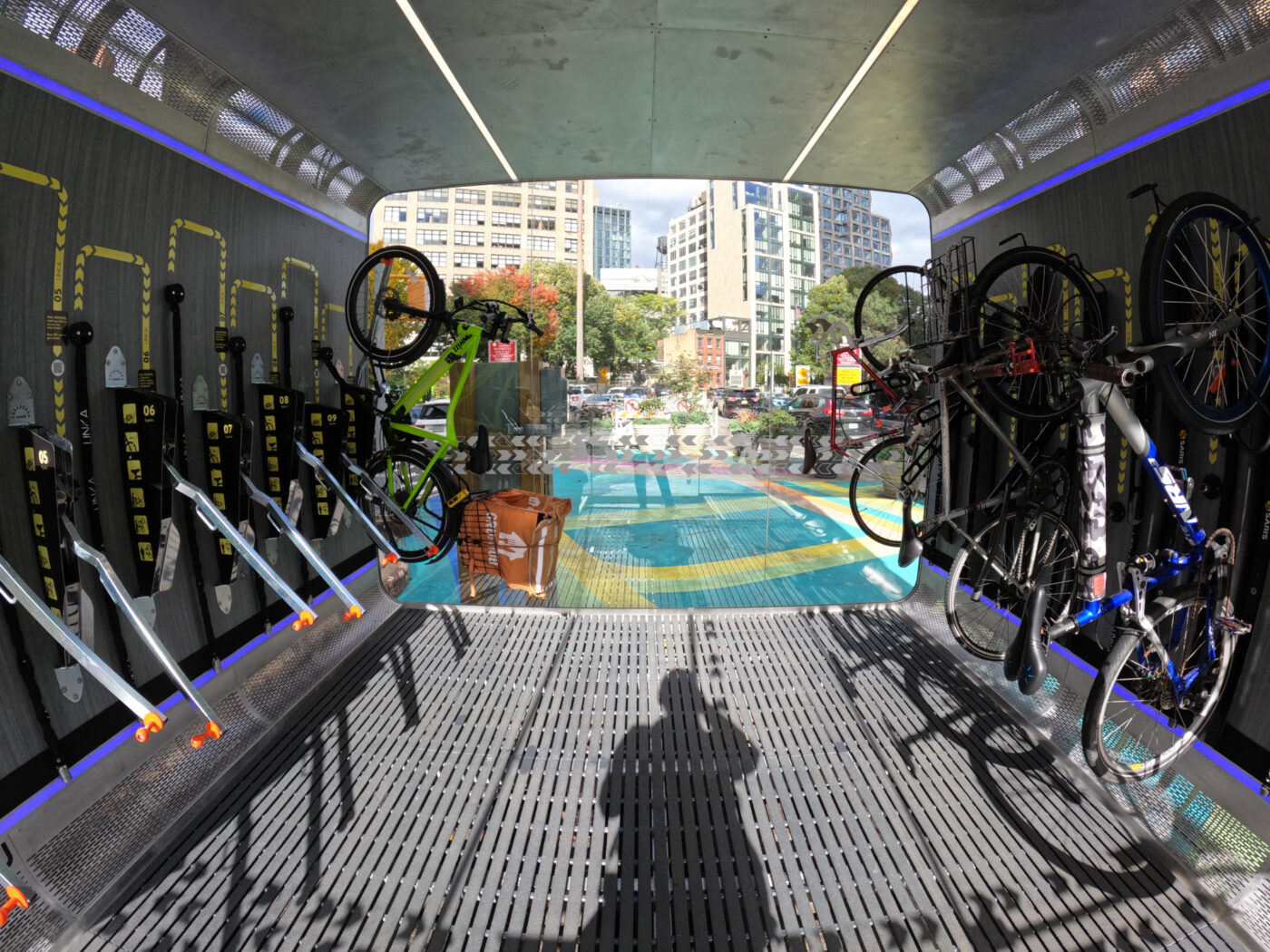
“I don’t think you’re going to find an outdoor facility that’s as advanced as this anywhere in the world.”
– Shabazz Stuart, Oonee
— This story is from my recent trip to New York City. See more coverage here.
48 hours ago I stood in the middle of Hudson Square in Lower Manhattan as hundreds of drivers crammed into the Holland Tunnel, and set my gaze on an Oonee pod for the first time. I’ve heard about these and followed their co-founder Shabazz Stuart online for years, but until Saturday had never seen one in person.
The appeal of this concept is that it can help us solve one of the biggest problems many cities, including Portland, face when trying to encourage cycling: give people confidence to park without worrying about theft.
I had no idea how an Oonee worked before I walked up on one for the first time in Brooklyn Saturday. All I did was download the app, get verified through a quick process (by uploading my driver’s license), and then I was a member. To get in, all you do is tap “open door” in the app. It’s a free system that allows any verified person to open the doors, walk in and park a bike.
It worked beautifully. And it looked even better.
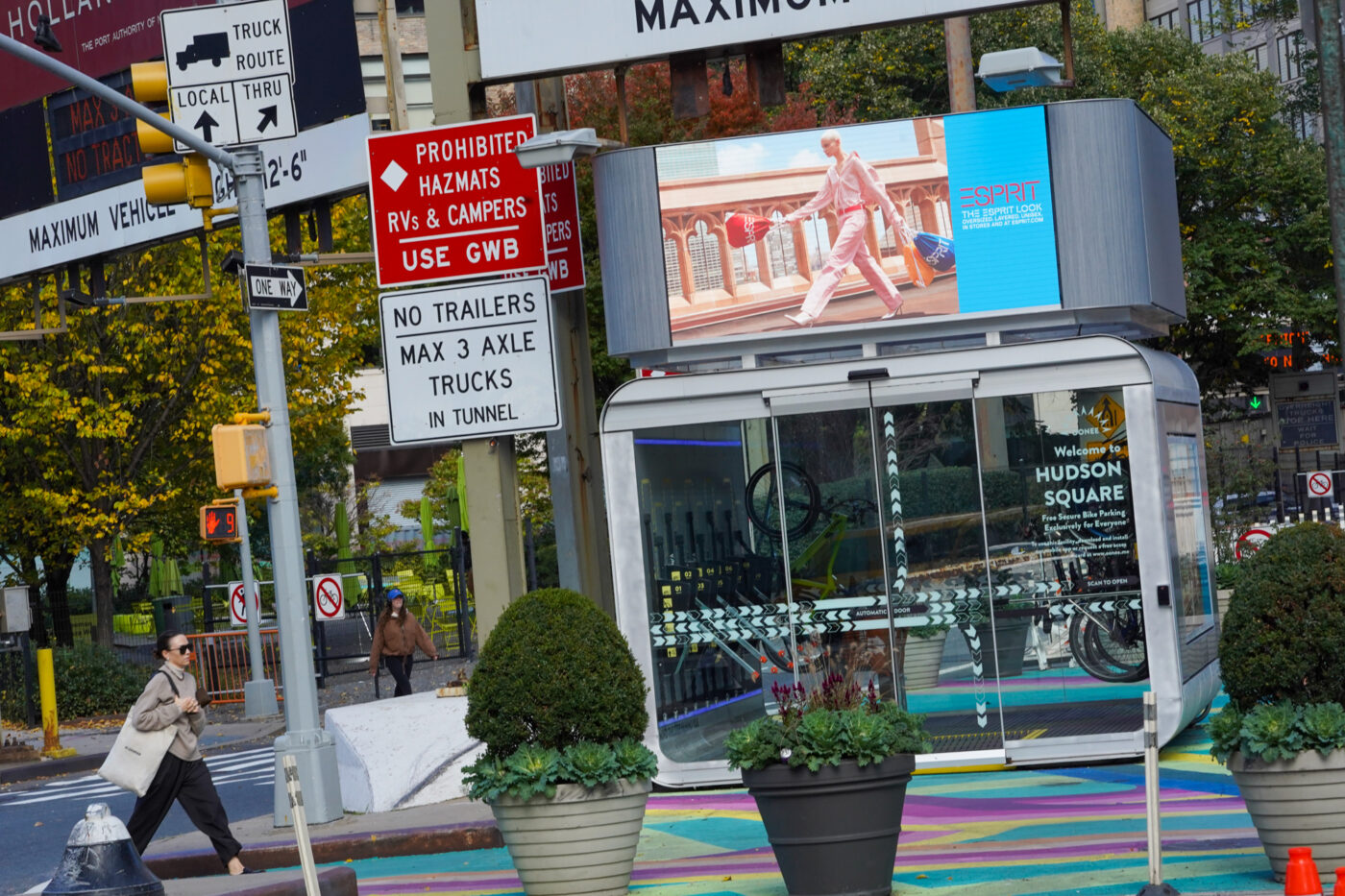
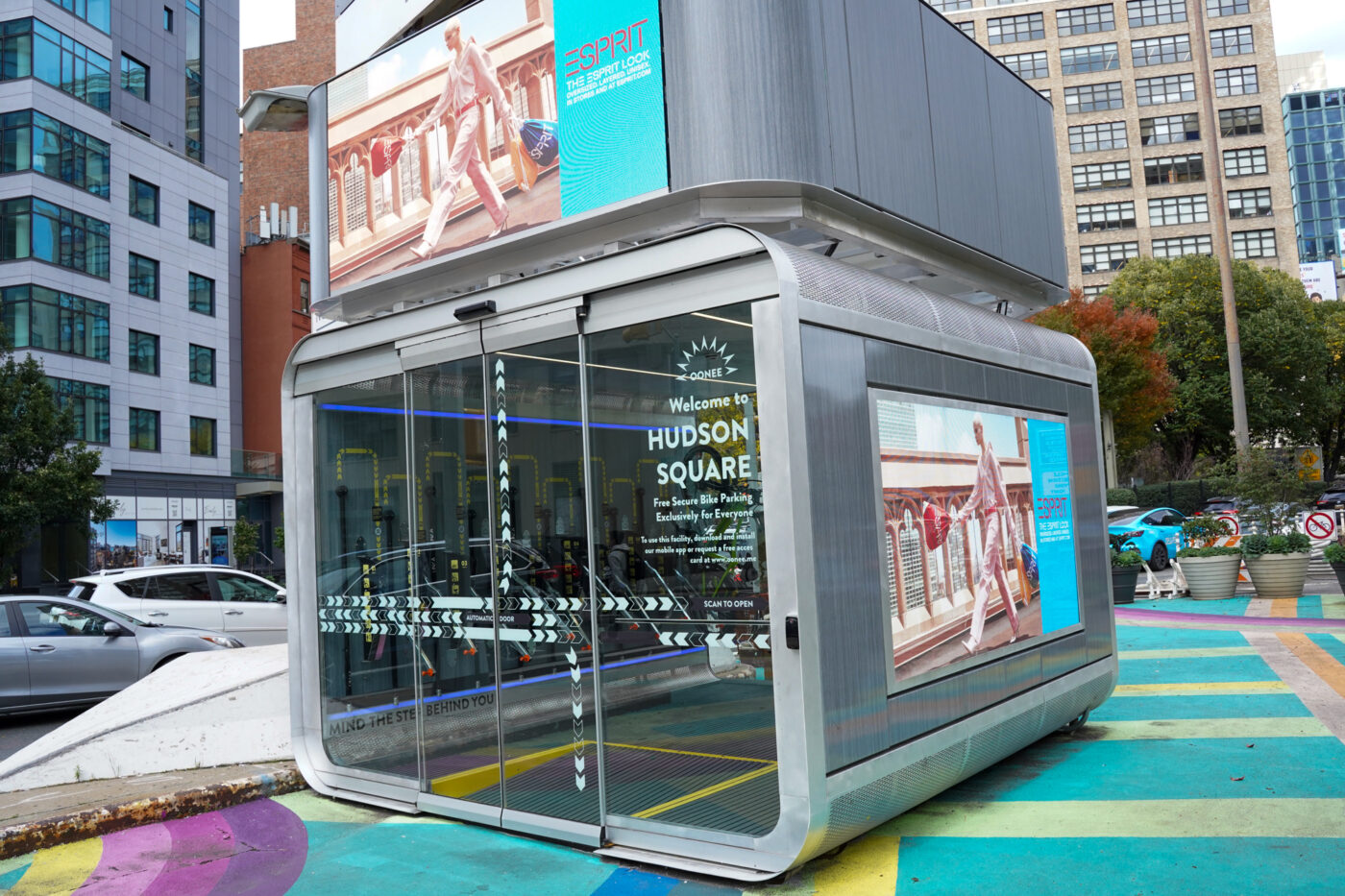

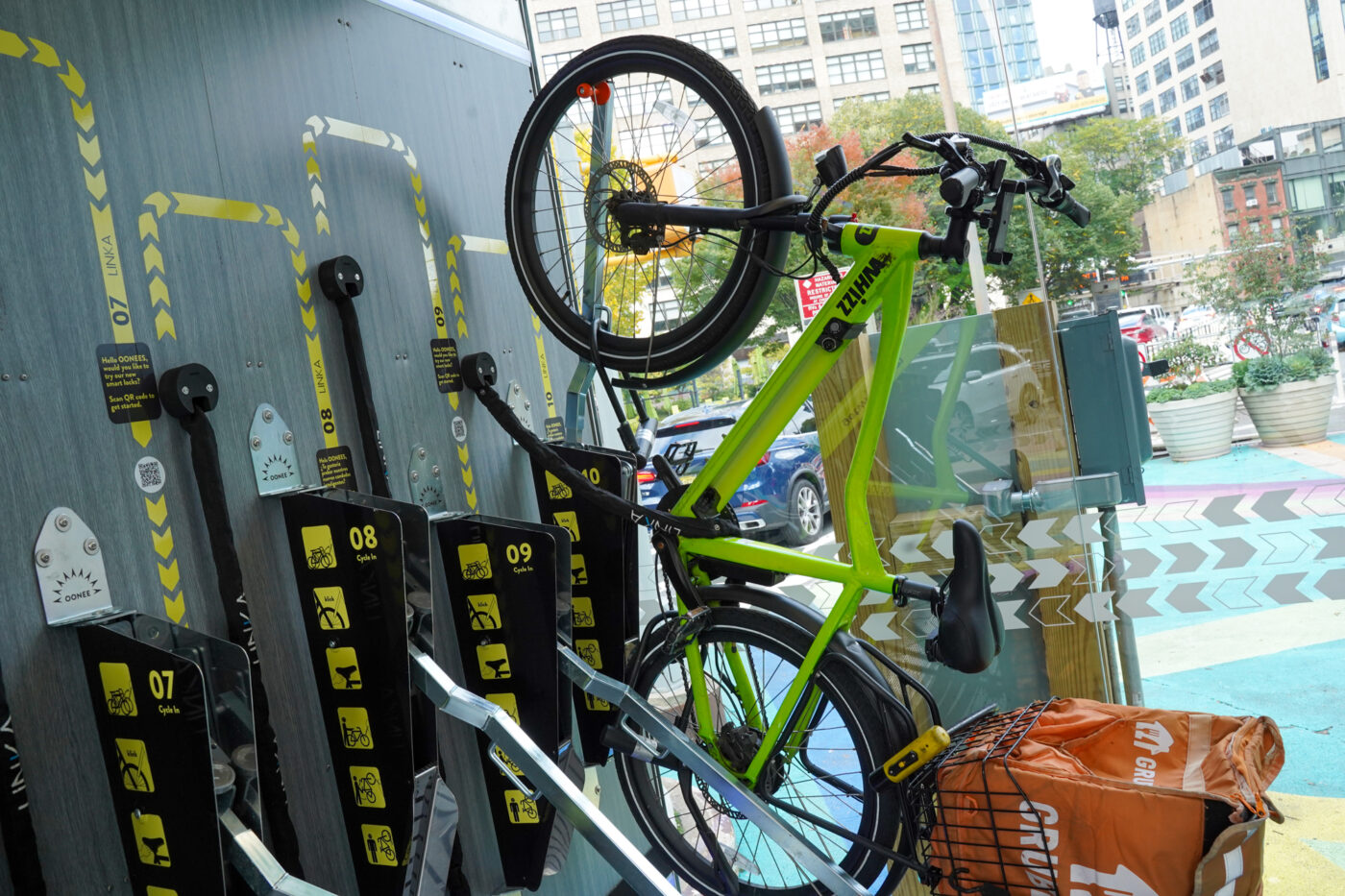
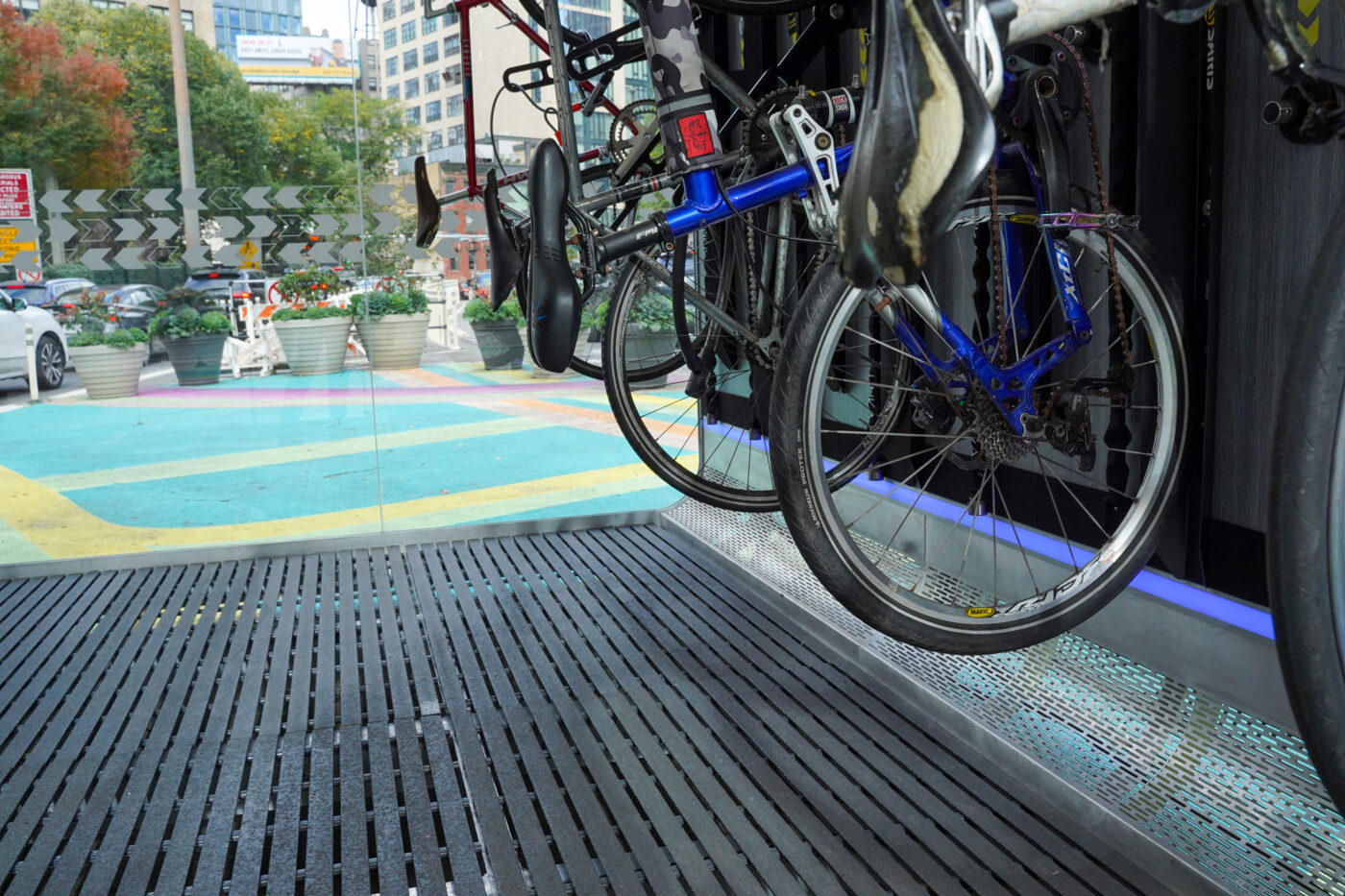
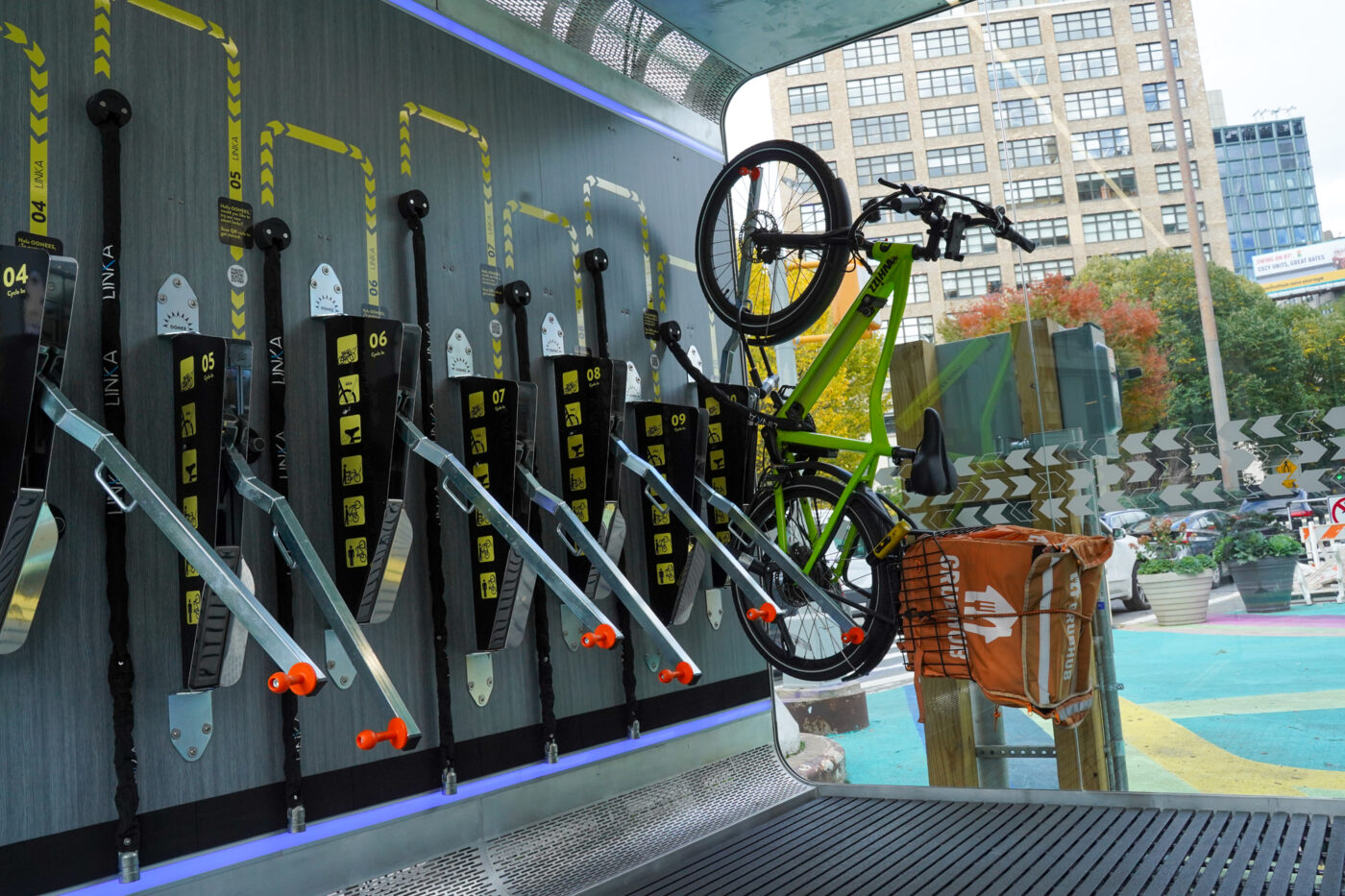

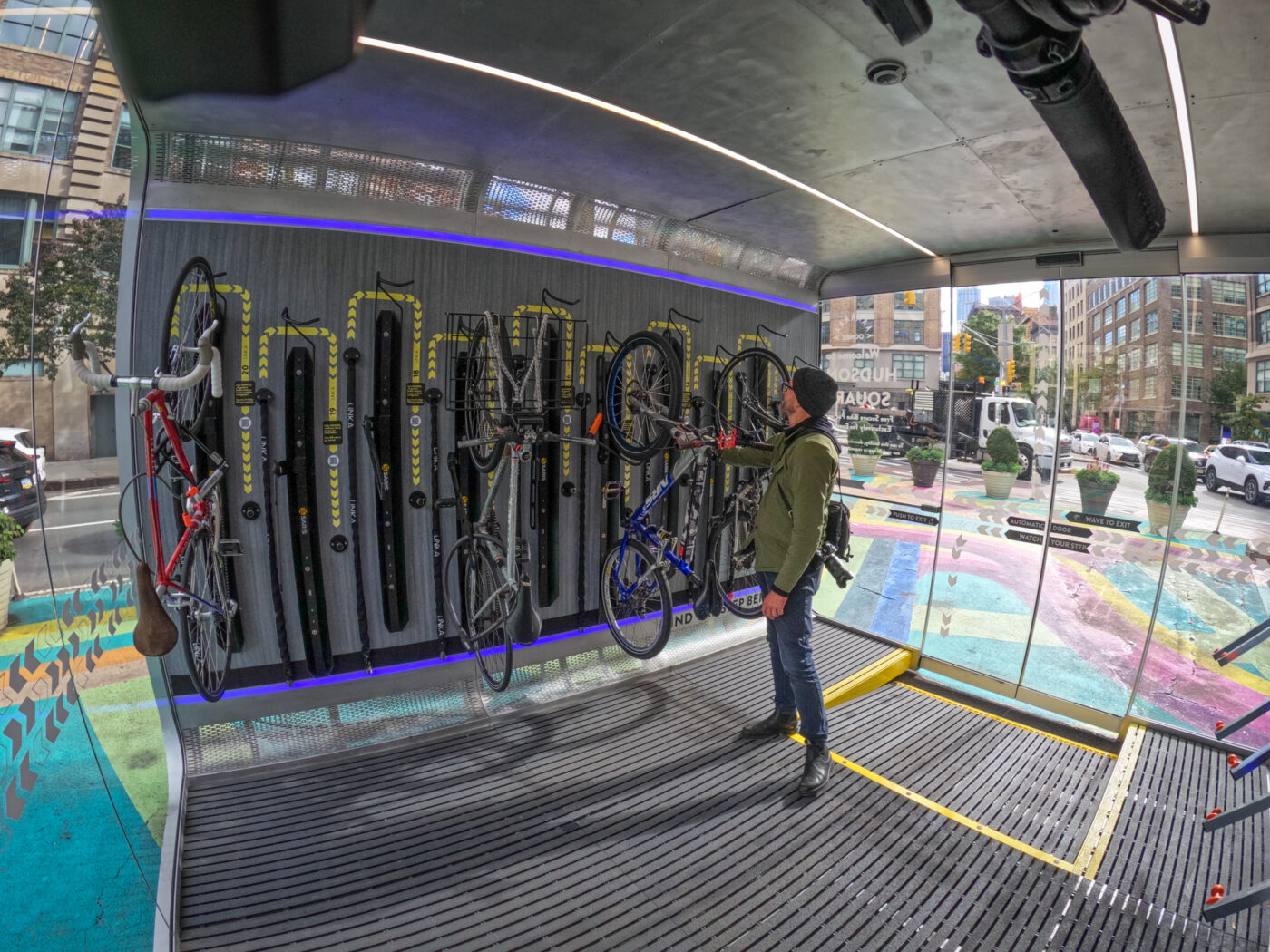
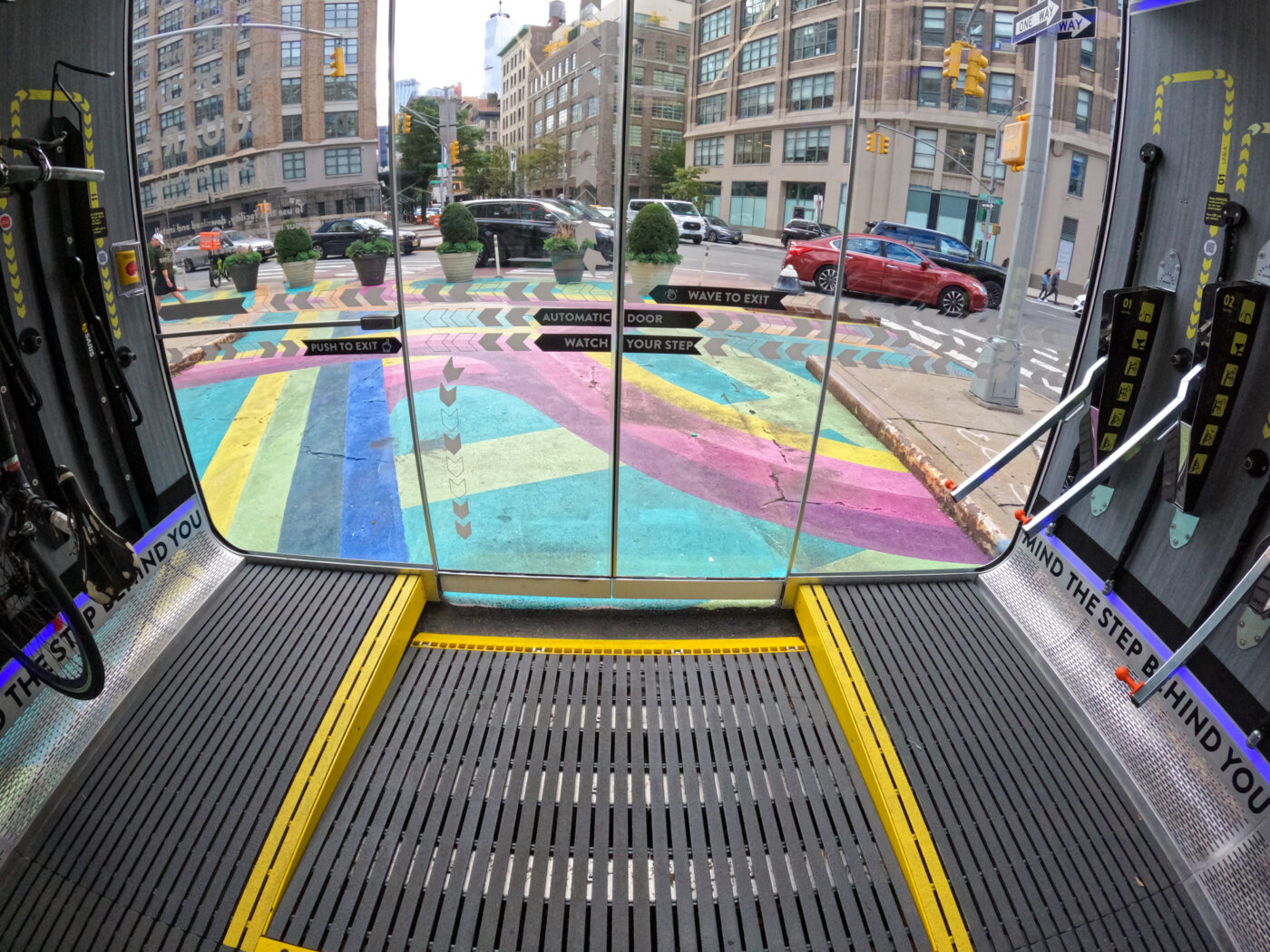
The Hudson Square pod (above) is one of 13 currently deployed. Oonee is a private “social impact startup” company run by Stuart and what he calls a “motley crew.” It was founded in 2018 and, after weathering the pandemic, is poised for growth.
Stuart has a grand vision. He’s not looking to place one pod here or there. “We seek to deploy vast networks of secure bike parking and charging facilities,” he told me in a FaceTime interview while I stood in the Hudson Square pod. “Citi Bike has 1,700 [docking] facilities across the city. We have to match that density pattern in order to be efficacious.” It may sound ambitious, but when you hear Stuart’s pitch, you start to believe it’s possible.
What sets Oonee apart is that they are a one-stop-shop.
“The thesis behind Oonee was, what if we just remove all the barriers? What if we did the planning? What if we did the finance? What if we did the community relations? What if we did the manufacturing, design, and operations? So all an agency had to do was say, ‘Yes, you can put it over there,'” he said, quite convincingly.
Oonee’s success in New York City thus far hasn’t gone unnoticed. They just signed a 30-pod contract with the City of Jersey City across the Hudson River and have a contract with the New York City Port Authority.
Back to the pod in Hudson Square. “I don’t think you’re going to find an outdoor facility that’s as advanced as this anywhere in the world,” Stuart said. He spoke confidently, but it didn’t come off as boasting because, well, from what I know, he was absolutely right.
Standing inside the pod you can tell the materials and finish are of the highest-quality. The automatic door, the thick glass, the ramp leading to the metal floor, all the design cues — it felt like a premium consumer product. Sort of like the iPhone of bike parking perhaps?
And the high quality design isn’t just a nice-to-have. Any urban planner will tell you that when a piece of infrastructure looks and feels world-class, it’s more likely to be treated with respect. I saw two Oonee pods while in New York City. Both were in very busy downtown locations (Barclay’s Center in Brooklyn and this one) and both were in pristine condition. No graffiti. No vandalism of any kind.
The racks themselves come in two varieties. The pod holds 20 bikes. One one side are 10 hanging hook racks built by Saris. On the other are a lift-assisted racks created by Oonee that can lift bikes weighing up to 75 pounds.
Is it really secure? “There’s no bike parking system in the world that’s like Fort Knox,” Stuart said. “I’ve never said we are theft-proof. We’re not. What we will say is you’re 99% less likely to experience theft, if it’s a high quality, securitized space.” Each pod comes equipped with two video cameras, the aforementioned ID verification system (“We know every single person who walks inside a facility,” Stuart said), self-locking chains on the racks, and users can also use their own locks.
Every year, Stuart said there are an average of two thefts across the system. And every verified parking customer has insurance. So if your bike does get stolen, they’ll send you a check to help buy a new one.
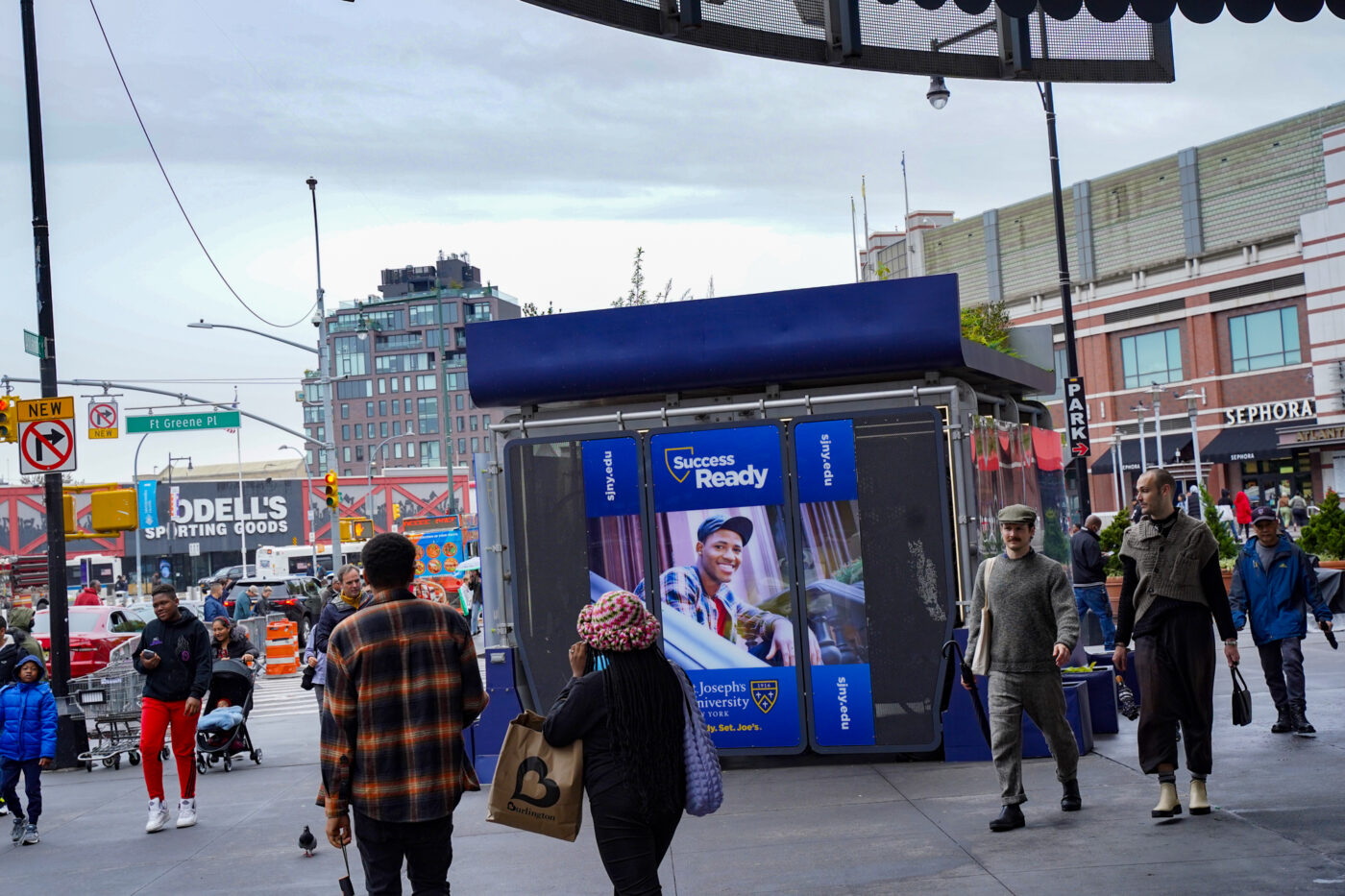

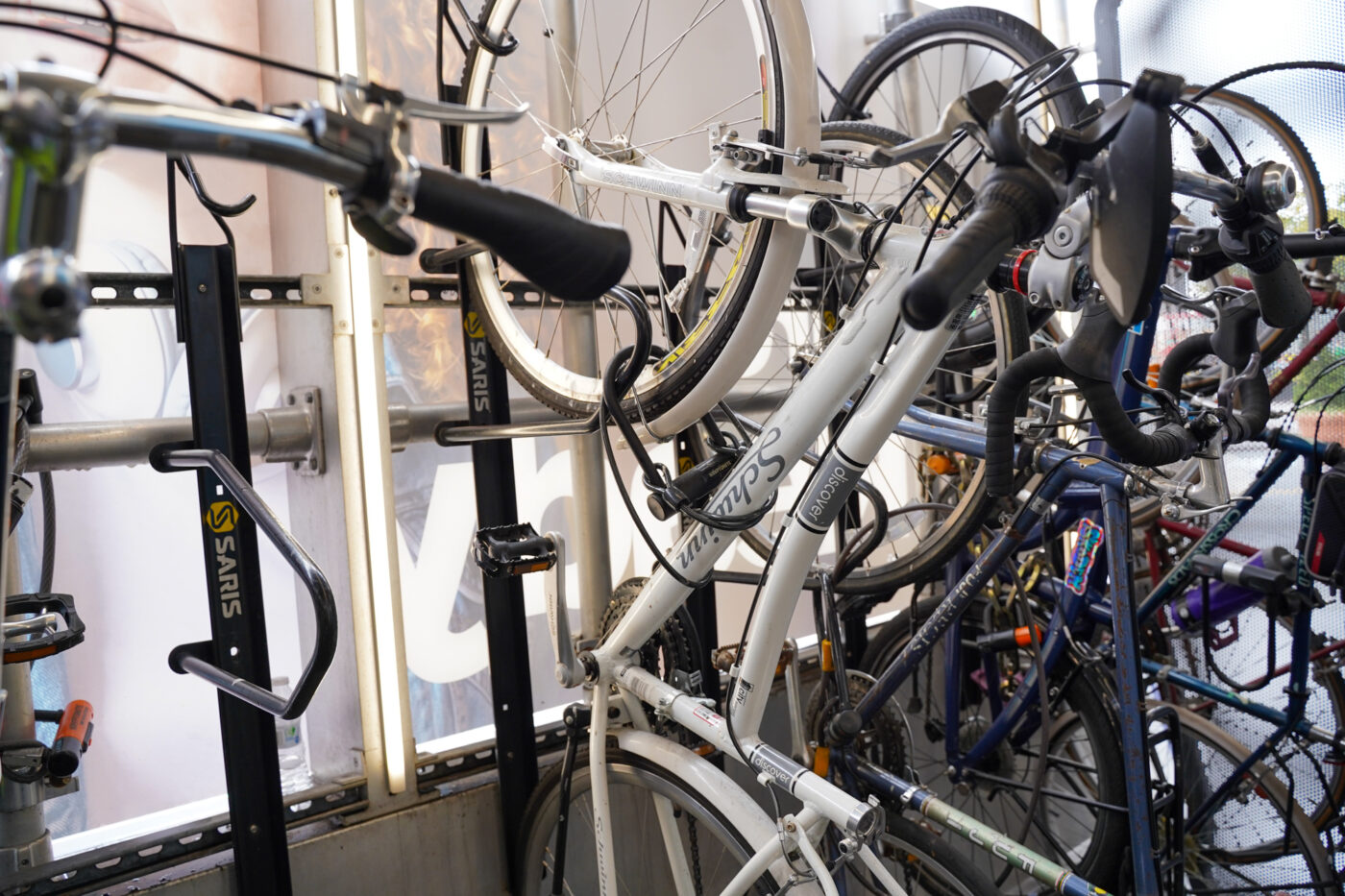
How can they offer this for free? Their model relies on advertising, not customer fees, to pay the bills. Stuart said the Hudson Square pod costs about $350,000 to build and deploy. Because of its prime Manhattan location, it makes almost all of that back in advertising revenue in a year thanks to its slick digital billboards on all sides. The high cost of advertising at locations like this help subsidize other pods.
To keep the ball rolling, Stuart and Oonee need to raise millions of dollars to build their team and deploy their vision of pods blanketing every major city in America. The money is there, he says, it’s just being spent on the wrong things.
“In 2017 there were billions of dollars being spent on scooter programs,” he said. “There are some good scooter companies out there… But venture capitalists were wasting so much money on ideas that weren’t producing ROI for society. I just think that we should be deploying capital in ways that that actually solves real problems.”
Oonee seems to be on the right path. Getting anything bike-related installed in such high-profile public places as Oonee has done — without massive bike-lash or a NIMBY war — is a massive feat in and of itself. Solving the problem of secure urban bike parking at a large scale, is just icing on the cake.
— Oonee.us



